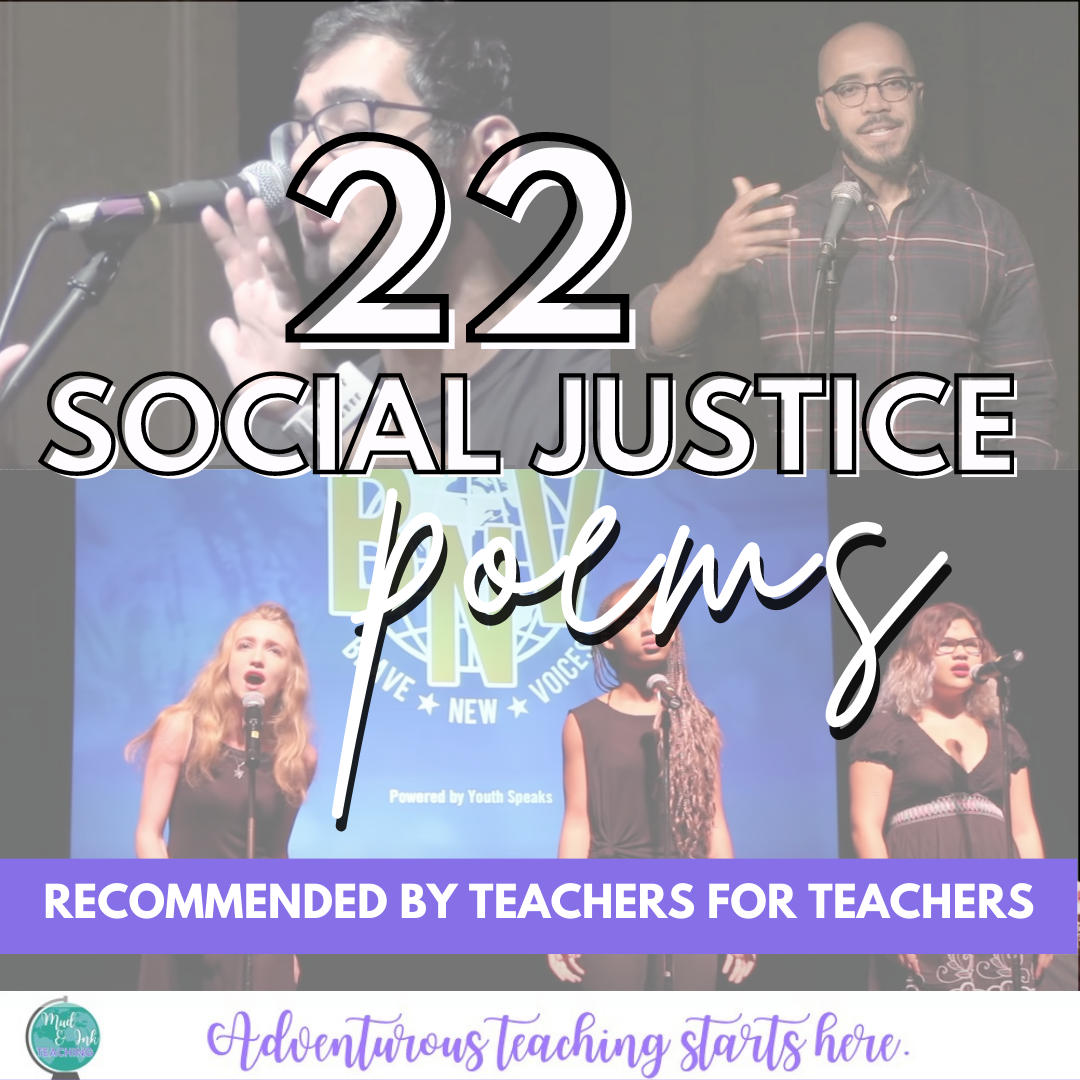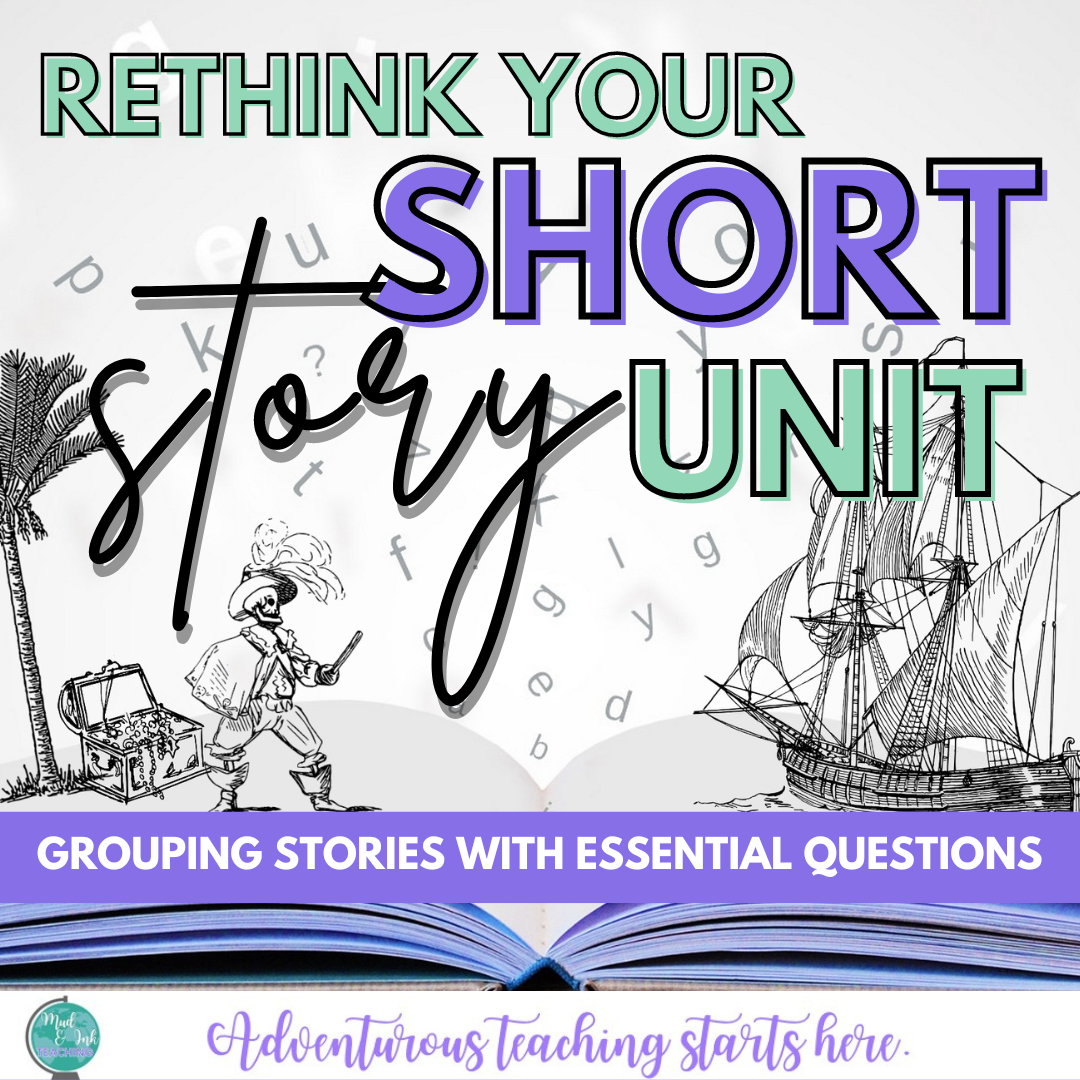
ADVENTUROUS TEACHING STARTS HERE.
Life's Blueprint: An ELA Lesson Honoring Dr. Martin Luther King Jr.
Dr. King’s legacy is especially powerful in the ELA classroom: his words, his rhetoric, and the passion with which he speaks them is not only worthy of study in its own right, but the overlaps into our content area make the analysis of the layers of his work that much more rich and impactful. Here is a free lesson walkthrough for your middle or high school English class celebrating Martin Luther King Jr.’s birthday.
22 Teacher Favorites: Poems for Social Justice
Poetry is one of my favorite vehicles to have these critical thinking discussions about social justice. The voices in poetry are so raw, real, and products of the moments from which they came. This list of 22 came from talking to teachers online about their favorites to use in the classroom, as well as my own experience teaching poetry and creative writing.
Unit Makeover: The Short Story Unit in Secondary ELA
Short story units have the potential to deeply inspire and impact learning with students, but if the approach is disjointed or lacking any sort of alignment, these units can feel like flops. Here are the ways that I craft meaningful, engaging, and interesting units to highlight the short stories that we love (and a few more that we should add to the rotation!)
10 Back to School Learning Station Ideas for Middle and High School
One of the best ways to start your back to school lesson planning is with a stations activity. Gone are the days of reading the syllabus out loud, and right in front of us are the days of interactive, meaningful, and focused activities. Get your students started in groups and take them through an orientation to your room, your expectations, and the school year ahead. Here are 10 ideas to get you started.
Getting Books with LGBTQ+ Protagonists into the Hands of All Students
Having your shelves stocked with LGBTQ+ protagonists and stories is great, but if students don’t know they’re available, don’t have a safe time to check them out, are intimidated by the cover, or simply don’t feel comfortable checking the books out, then the diversity of the library doesn’t really matter! Here are five steps to take to make sure those wonderful books actually make it into the hands that want them and need them.
LGBTQ+ Stories Belong in Your Classroom Library
Each year teachers welcome new students to embark on amazing learning journeys in ELA classrooms. Teachers try as hard as they can to provide activities that engage students, introduce new skills, and create environments that are welcoming to all students. Here are five ways to make sure that happens for LGBTQ+ students…
4 Authors, Activists and Artists to Highlight During Black History Month
Here are four authors and artists that deserve a spotlight any time of year, but especially during Black History Month. Each has a speech, story, or TED Talk that you can share with students alongside a wide variety of units.
Three Reasons You Should be Teaching A Thousand Splendid Suns
If you have a world literature course, or any upperclassman English course for that matter, A Thousand Splendid Suns should be in your curriculum. Full stop. This is by far and away one of my personal and my students’ favorite novels and if you’re not teaching it, you’re missing out. There are so many things about this novel unit that are perfect for skill-building and ripe for deep, meaningful discussion, but if I had to boil it down to my top three, then here they are…
Must Listen Podcasts for English Teachers
If you’re new to the podcast world, let me give you a big, warm WELCOME! Podcasts have been a game-changer for me both for professional development and for adding new texture, voices, and perspectives to my Essential Question based units.
The curated list below is broken into these two categories: podcasts for PD and podcasts for content. Each of these will inspire you with new ideas and restore your joy and love of teaching at your core.
Class Discussion: When to Stay Quiet, When to Speak Up
In order to facilitate high-quality classroom discussion, we must set up purposeful scaffolds on the front and back end of each discussion; however, in order for students to engage with the practice needed to meet these goals, we have to let the discussion happen organically and without our interference. These are the time that we stay in the background and when to speak up.
7 LatinX Poets You Should Be Teaching Right Now
Poems and poets come from all over the world and deliver POWERFUL and NEEDED perspectives to our students in a short, compact manner. Poetry studies don’t take the time that novel studies do. Pairing our texts alongside poems that provide additional voice and contrast is a critical practice that all English teachers should be working to make a regular occurrence in the classroom.
6 Ways to Highlight LatinX Culture in the ELA Classroom
Bring LatinX voices into your ELA classroom and curriculum all year long. Here are five easy places to start with a more diverse approach.
Equity & The ELA Classroom: Considering the Classics
Swapping out a few titles is not the only work of building an equitable ELA curriculum. Here are some reflection questions and suggestions to take to your department to have the real conversation today.















